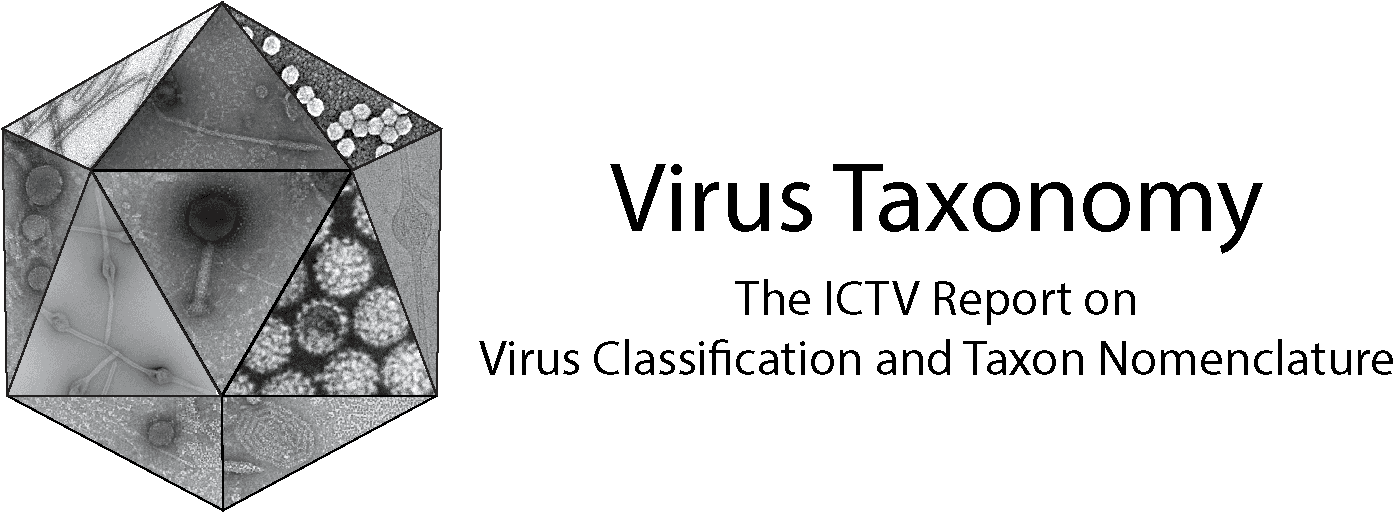Family: Picornaviridae
Genus: Parechovirus
Distinguishing features
The genus is distinguished on the basis of genetic characters.
Virion
Morphology
No surface morphology is visible by EM. The crystal structures of human parechovirus 1, human parechovirus 3 and Ljungan virus 1 have been resolved (Zhu et al., 2015, Shakeel et al., 2016).
Physicochemical and physical properties
Virions are acid stable. The buoyant density in CsCl is 1.36 g cm-3.
Nucleic acid
Genome (Hyypia et al., 1992, Ghazi et al., 1998, Niklasson et al., 1999, Joffret et al., 2013, Smits et al., 2013, Pankovics et al., 2017a, Shi et al., 2018): 7,339–7,608 nt (5′-UTR: 710–730 nt; ORF: 6,543–6,753; 3′-UTR: 87–111 nt). The 5′-UTR contains a typical type II IRES. The cre has been identified in the 1AB region for human parechoviruses and is thought to lie within the 3B region of Ljungan viruses.
Genome organization and replication
Genome layout
VPg+5′-UTRIRES-II- [1AB-1C-1D-(2Anpgp)/2AH-box/NC-2B-2C/3A-3B-3C-3D]-3′-UTR-poly(A)
The deduced polyprotein ranges from 2,180–2,250 aa. The polyprotein contains only a single protease (3Cpro). All parechoviruses have a 2A protein with an H-box/NC motif. Members of Parechovirus B, Parechovirus C, Prechovirus D, Parechovirus E and Parechovirus F possess a 2A protein with an NPG↓P motif.
Biology
Human parechoviruses replicate in the respiratory and gastrointestinal tract. Infection is particularly prevalent in infants and young children but it is probably often asymptomatic apart from infections with human parechovirus (HPeV) type 3 which can present with severe neonatal sepsis and central nervous system damage. In addition to respiratory infections and diarrhoea, infections of the central nervous system (encephalitis, meningitis, ataxia) have been reported. HPeV types 1 and 6 have been found in monkeys with diarrhoea, although disease association was not proven. The cytopathology may be unusual in including changes in granularity and chromatin distribution in the nucleus, when viewed in the electron microscope. Ljungan viruses appear to infect predominantly rodents (voles) and have been proposed to infect humans, however, conclusive data is awaited. Some human parechoviruses (types 1, 2, 4, 5 and 6) possess an RGD tri-peptide (towards the carboxy-terminus of 1D) which is involved in integrin receptor-binding. The integrins αvβ3 and αvβ6 have been shown to be the primary receptors for HPeV-1 in A549 cells. Receptor usage for the remaining human parechoviruses and Ljungan viruses is not known. Sebokele virus was detected in mice (Hylomyscus spec. ) in the Central African Republic. Ferret parechovirus was detected in rectal swabs of ferrets (Mustela putorius furo).
At least 29 genetic types are distinguished by means of phylogenetic analysis: Parechovirus A (19 types), Parechovirus B (6 types), Parechovirus C (1 type), Parechovirus D (1 type), Parechovirus E (1 type), Parechovirus F (1 type).
Antigenicity
There is no cross-neutralization between human parechovirus types 1, 2 and 3. There may be a cross-reaction between types 2 and 5.
Derivation of names
Parechovirus: from par(a)echo from pará Greek for beside, and echo, the former name of the type species, an acronym for "enteric, cytopathic, human, orphan"
Species demarcation criteria
Members of a species of the genus Parechovirus:
- are less than 30% divergent in polyprotein aa sequence
- are less than 30% divergent in P1 aa sequence
- are less than 20% divergent in 2C + 3CD aa sequence
- share a common genome organization
The divergence (number of differences per site between sequences) between members of different Parechovirus species ranges from 0.44–0.63 for P1 and 0.34–0.59 for 3CD.
Related, unclassified viruses
|
Virus name |
Accession number |
Virus abbreviation |
|
Manhatten parechovirus [rat/NYC-A11/USA/2013] |
KJ950935*; KJ950936*; KJ950913* |
MPeV |
|
parechovirus-like picornavirus [falcon/HA18_080/2014/HUN] |
|
|
|
Yili teratoscincus roborowskii picornavirus 2 [LPWC210215] |
|
Virus names and virus abbreviations are not official ICTV designations.
* partial genome

